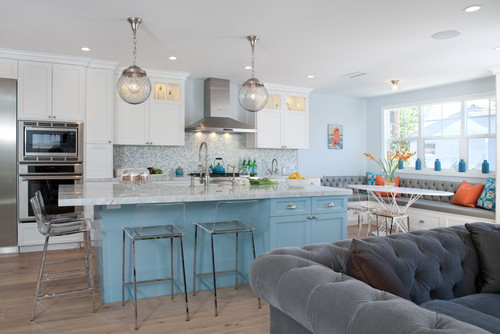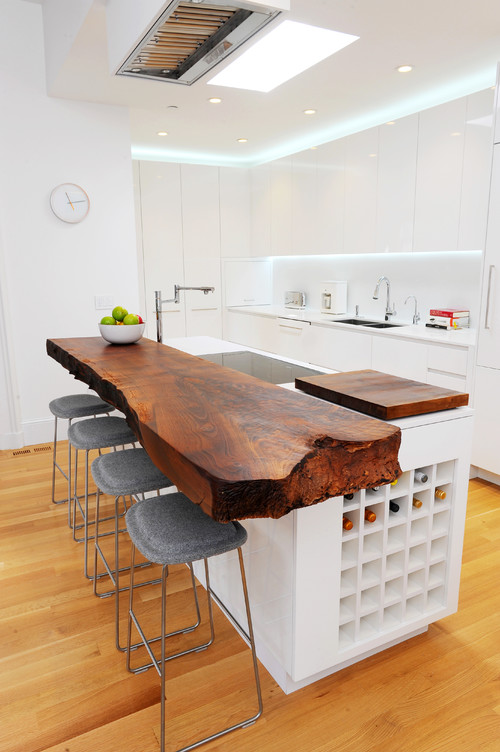
“The details are not the details. They make the design.” ~ Charles Eames, Architect & Furniture Designer
For many homeowners, no kitchen design is complete without an island at its center. The kitchen island can serve many roles: dining table, homework central, crafting area, work desk, food prep/cooking station, and entertainment center. When designing to accommodate a variety of activities, it’s often the small design details that can make all the difference in an island that works and one that just takes up space. While function should be the number one priority, aesthetics shouldn’t be ignored because the island is nearly always a focal point. Here’s a look at some of the design details you might want to consider that can help make your kitchen island functional and beautiful, too.
Design Details for Functionality
For Food Prep
For food preparations on your island, you'll definitely want outlets for small appliances, and you'll want easy access to your refrigerator and cooktop. A prep sink is worth considering, as is a partial or full butcher-block countertop for knife or dough work.
For Cooking
A heat-resistant countertop such as granite or quartz is a handy (and safe) surface for hot pans. Most designers like to allow at least 18" counter space on each side of the cooktop for efficiency and safety (NBKA guidelines for the minimum counter space next to the cooktop are at least 9″ of counter space on one side of the cooking surface and 15″ on the other).
Ventilation (either downdraft or hood) is a must. If you like to have an eating area on your "cooking" island, allow 24" behind the cooktop, or raise the countertop for diners to avoid spatters.
If you've also opted for a prep sink, consider a pull out-faucet that can reach the cooktop for filling pots.
For island cooking convenience, you'll want to have utensils, spices, cookware, and oils stored under the counter in drawers or cabinets.
For Activities: Eating, Working, Playing
Traditional counter height (36") is designed for standard counter stools, but if you want to use regular chairs, then part of the island will need to drop down to table height (29" to 30"). If you raise part of your island to 40" to 42", you'll need bar stools to accommodate the taller height.
Move flatware and dishware closer to where families gather to eat. Drawers in the island are ideal for dinnerware storage.
Consider "floating" your island countertop rather than supporting the island overhang with bulky legs or corbels. You'll have roomier seating as well as unobstructed access to storage below. Our Hidden Island Support Bracket is the perfect concealed support for countertop overhang for a kitchen island or breakfast bar.
Design Details for Aesthetics
There is a plethora of a design details you can incorporate into your island design to create your own unique style. Here's a look a few of our favorites.
Contrasting Island
Whether you have a little cabinetry or a lot, consider an island with contrasting cabinetry to create interest. A contrasting island is an especially good move for the perennially popular all-white kitchen. It's also a good option for those who like the idea of colored cabinetry but don't want the commitment that colored cabinetry throughout requires.
Contrasting Countertop
If you opt to stay with the classic look of uniform cabinetry, consider a different countertop for your island to create interest and help define the island as a focal point.
Mixed Metals
Gone are the days kitchen cabinet hardware must match the other metals in the room (range hood, faucets, appliances, etc.) Copper, brass, gold, and silver can all be friends. A good rule-of-thumb is to use at least two metals, but no more than three.
This kitchen island sports a silver faucet with brass drawer pulls and sparkly gold pendants above.
Mixed Design Styles
← Older post Newer post →










